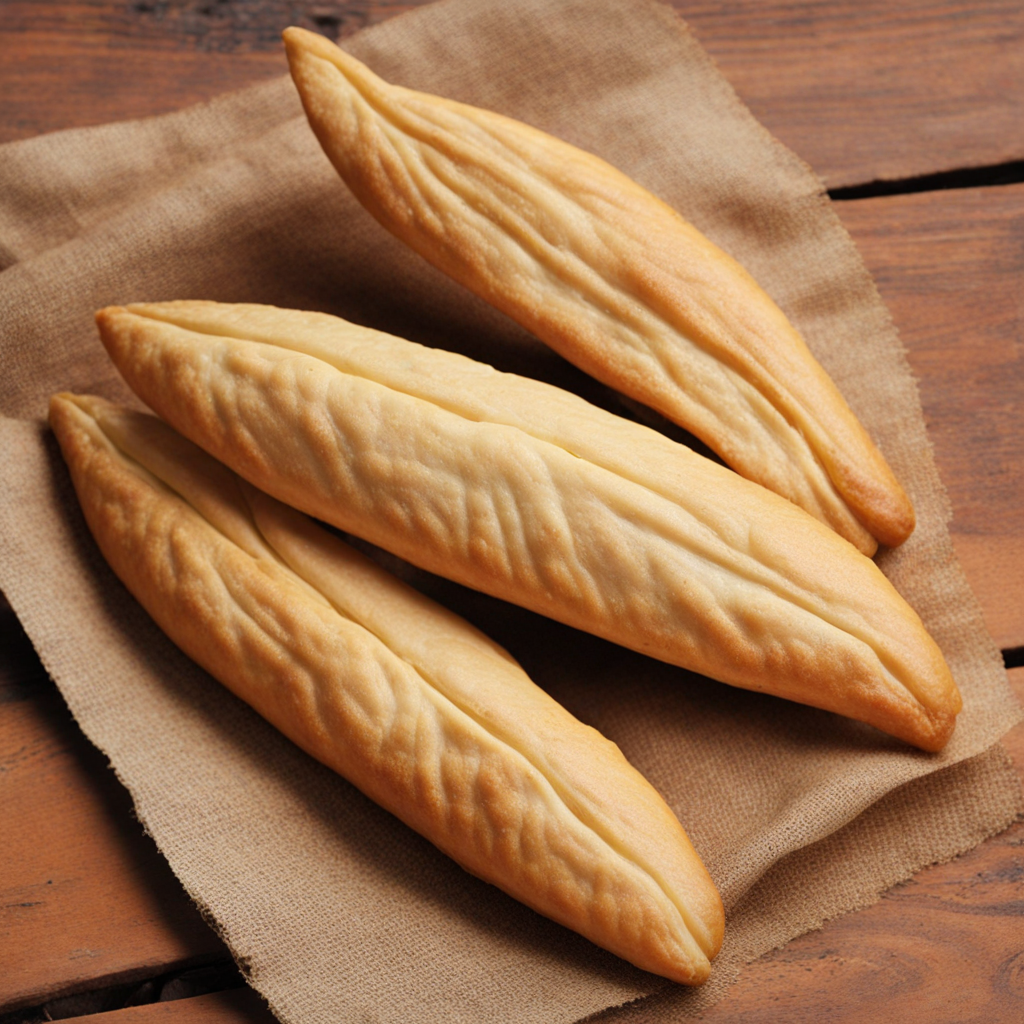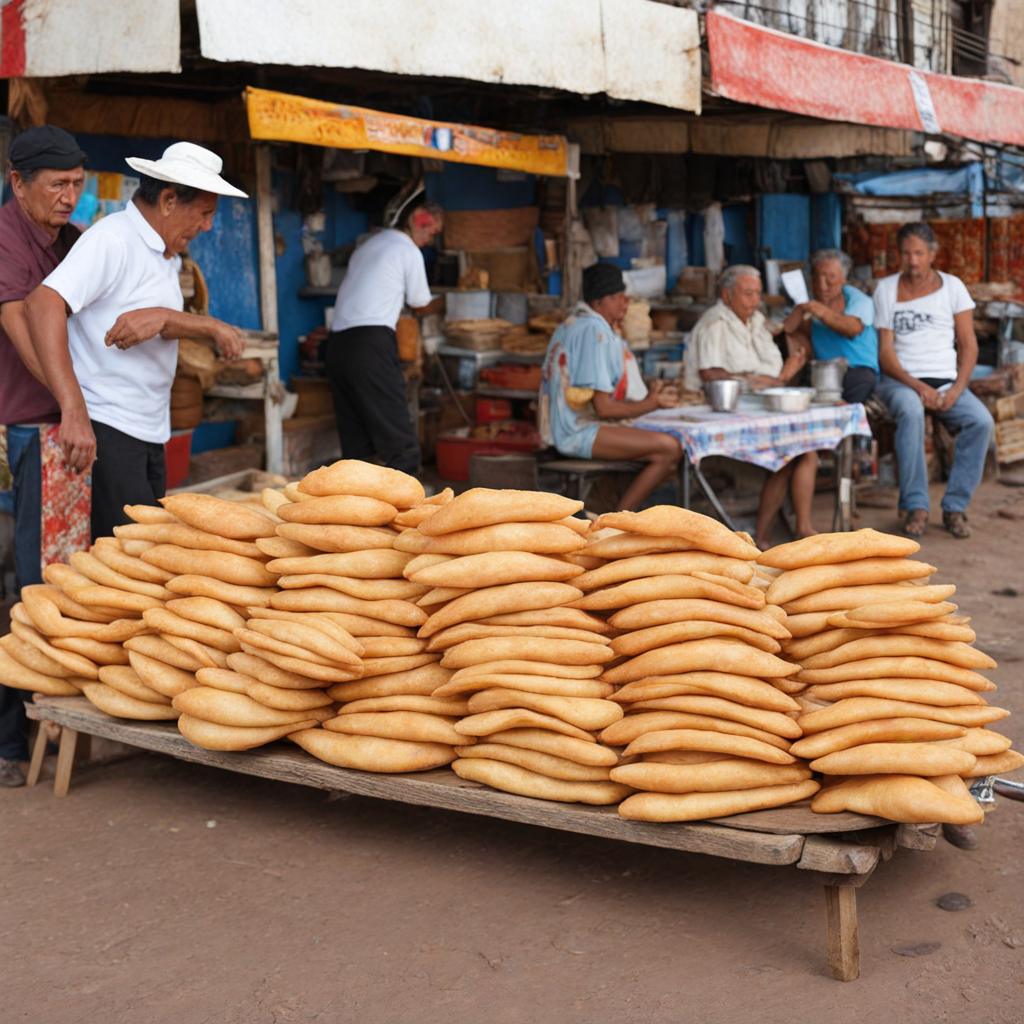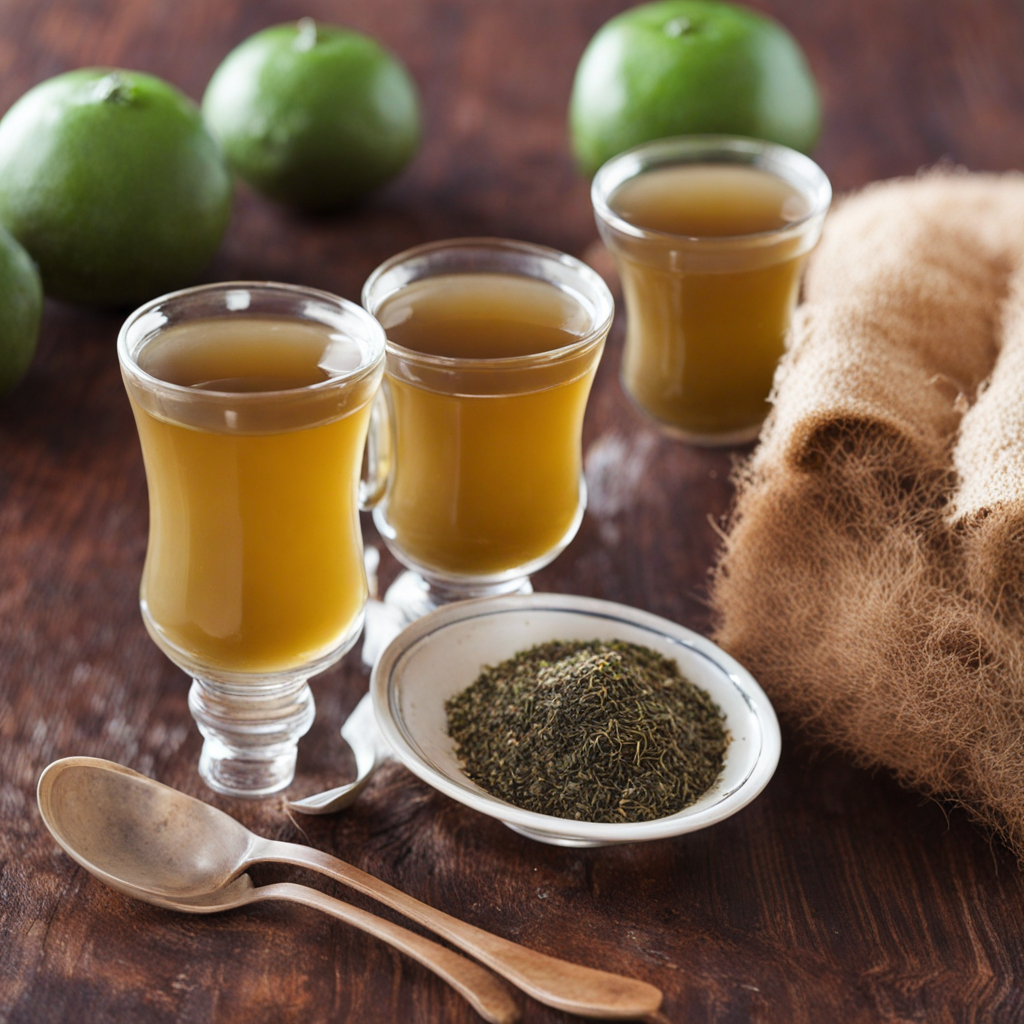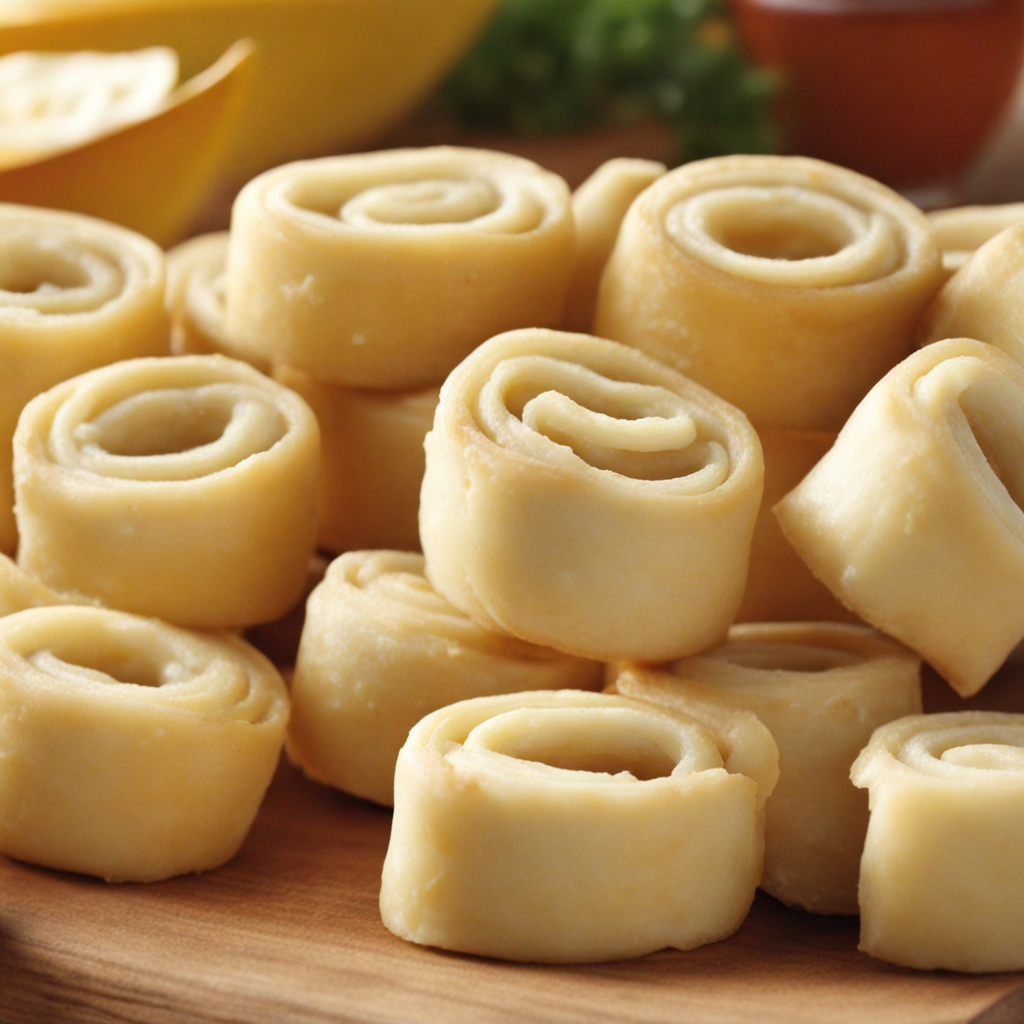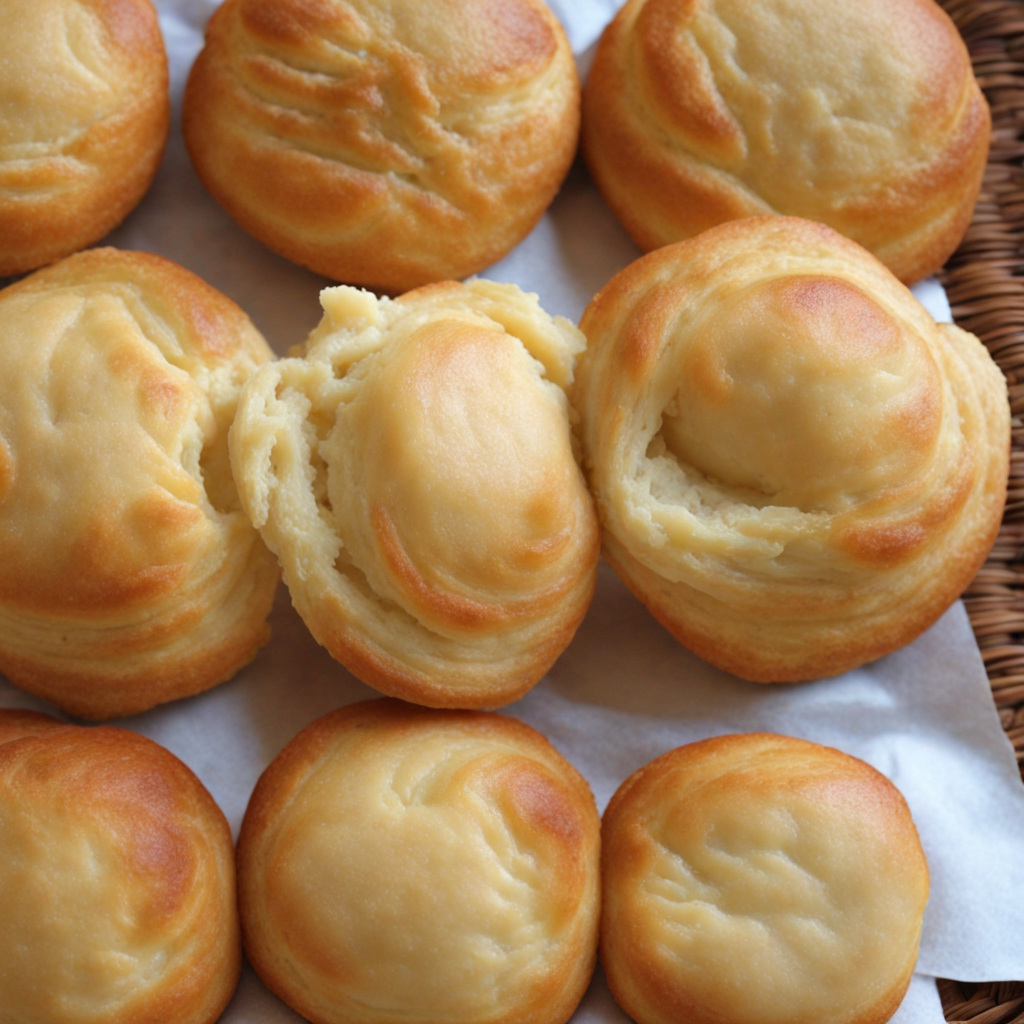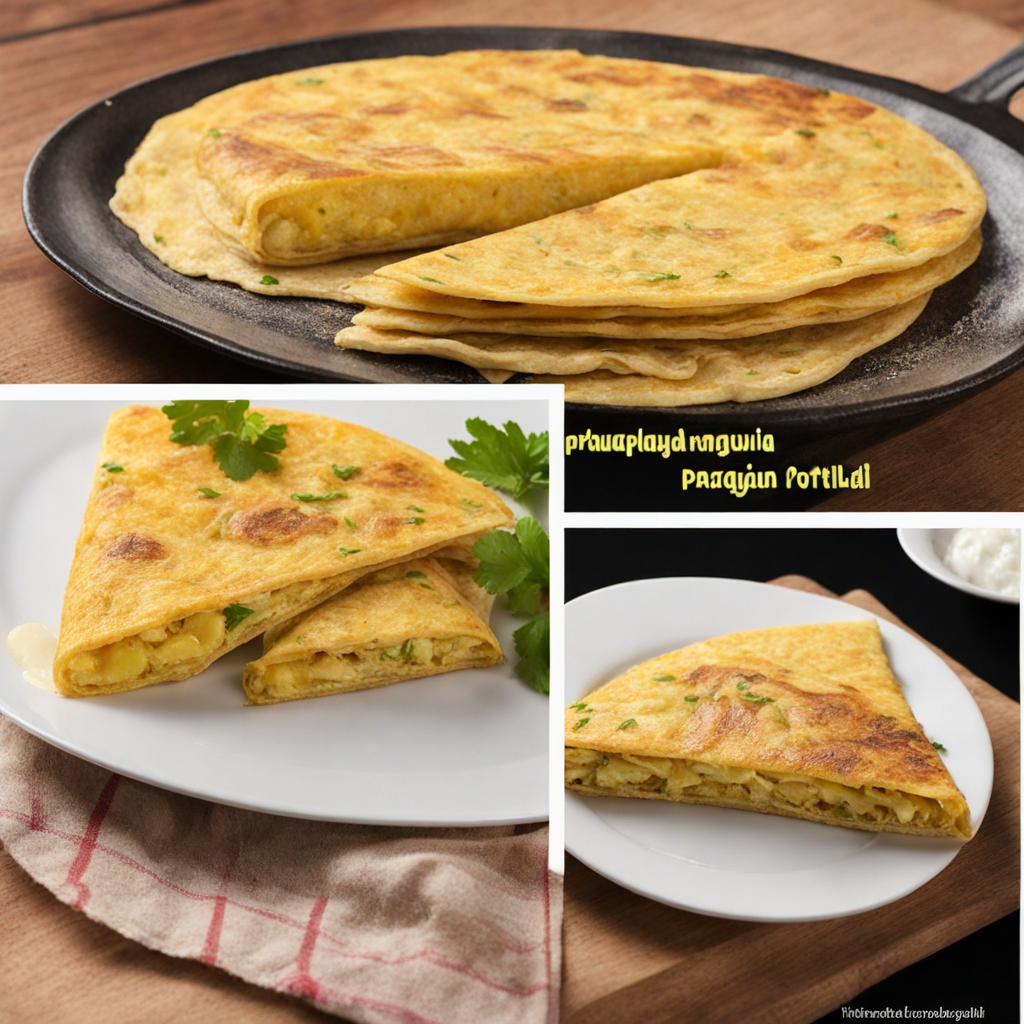Chipa Pirí
Chipa Pirí is a delightful and unique culinary gem hailing from Paraguay, known for its enticing flavors and comforting texture. At its core, Chipa Pirí is a type of cheese bread, but it stands out from other varieties due to its distinct ingredients and preparation method. The dough is primarily made from manioc flour, which gives it a chewy consistency and a slightly nutty flavor. This flour is combined with a generous amount of Paraguayan cheese, typically a soft, white cheese called "queso Paraguay," which melts beautifully and imparts a rich, creamy taste to each bite. The addition of eggs and milk adds to its moistness, creating a wonderful contrast to the crispy exterior. The preparation of Chipa Pirí is a labor of love, as it is traditionally shaped into small, round or oval forms before being baked to perfection. The exterior develops a golden-brown crust while the inside remains soft and cheesy, making it an irresistible treat for both locals and visitors alike. Chipa Pirí is often enjoyed warm, straight from the oven, allowing the cheese to ooze slightly and create a delightful experience for your palate. It's common to find these treats sold by street vendors or at local markets, where they are often paired with a cup of mate, a traditional Paraguayan drink. What makes Chipa Pirí truly special is not only its flavor but also its cultural significance. This dish is often associated with festive occasions and gatherings, serving as a symbol of warmth and hospitality in Paraguayan culture. Whether enjoyed as a snack, appetizer, or accompaniment to a meal, Chipa Pirí embodies the heart and soul of Paraguay's culinary heritage. For those looking to explore new tastes, indulging in Chipa Pirí offers a savory experience that beautifully captures the essence of this vibrant South American nation.
How It Became This Dish
A Journey Through Time: The History of Chipa Pirí in Paraguay #### Origins: A Culinary Fusion Chipa Pirí is a traditional Paraguayan snack that embodies the rich tapestry of the country's history, culture, and culinary heritage. Its origins can be traced back to the indigenous Guaraní people, who inhabited the region long before European colonization. The Guaraní had a deep connection to the land and its resources, using local ingredients like manioc (cassava) and corn to create a variety of foods. The name "Chipa" is derived from the Guaraní word "chipa," which refers to a type of bread made from manioc flour. The traditional method of making chipa involved grinding the roots of the manioc plant, mixing it with water, and forming rounded cakes that were baked on hot stones or in the embers of a fire. This early form of chipa served as a staple food for the Guaraní, providing sustenance during long journeys and communal gatherings. With the arrival of Spanish colonizers in the 16th century, the culinary landscape of Paraguay began to change. The Spanish introduced new ingredients such as cheese and eggs, which would later play a significant role in the development of chipa. The fusion of indigenous techniques and Spanish ingredients gave birth to various forms of chipa, including the beloved chipa pirí. #### Cultural Significance Chipa Pirí is more than just food; it is a symbol of Paraguayan identity and cultural pride. The snack holds a special place in the hearts of Paraguayans and is often associated with celebrations, religious festivals, and family gatherings. During Holy Week, for instance, chipa pirí is a popular treat, enjoyed by families as they come together to reflect on their faith and share in the communal spirit. The act of making chipa pirí is often a communal effort. Families gather in the kitchen to prepare the dough, each member contributing their skills and knowledge passed down through generations. This shared experience fosters a sense of unity and belonging, reinforcing the importance of family ties and cultural traditions in Paraguayan society. Chipa Pirí is also deeply intertwined with Paraguayan folklore. Stories and legends surrounding its origins have been passed down through generations, often highlighting themes of resilience and resourcefulness. The snack is a reminder of Paraguay’s indigenous roots, its ability to adapt, and its enduring spirit in the face of change. #### Development Over Time The evolution of chipa pirí is a testament to Paraguay's dynamic culinary landscape. Initially, chipa was primarily made with manioc flour, but as dairy farming expanded in the region, the recipe began to incorporate cheese, leading to the creation of chipa pirí. The term "pirí" translates to "little one" or "small," referring to the smaller size of these cheese-filled pastries compared to traditional chipa. During the 20th century, the popularity of chipa pirí surged, particularly in urban areas. As Paraguay underwent significant socio-economic changes, including urban migration, traditional foods like chipa pirí became more accessible and prominent in daily life. Street vendors began selling the snack in cities such as Asunción, further cementing its status as a beloved treat among locals and visitors alike. In recent years, chipa pirí has gained international recognition, appearing in culinary festivals and events that celebrate Latin American cuisine. Chefs and food enthusiasts are increasingly interested in exploring the flavors of Paraguay, leading to a growing appreciation for traditional dishes like chipa pirí. This newfound popularity has inspired modern interpretations, with chefs experimenting with various fillings and flavor combinations, while still honoring the traditional techniques and ingredients. #### Ingredients and Preparation The traditional recipe for chipa pirí typically includes a combination of manioc flour, cheese (often Paraguay's fresh cheese, known as "queso Paraguay"), eggs, and milk. The dough is kneaded and shaped into small balls or patties, which are then baked until golden brown. The result is a delightful snack that is crispy on the outside and soft and cheesy on the inside. While the classic version remains popular, contemporary adaptations have emerged, incorporating ingredients such as herbs, spices, and even different types of cheese. Some variations may also include fillings like ham, chorizo, or vegetables, showcasing the versatility of chipa pirí and its ability to adapt to modern tastes. #### Chipa Pirí Today In contemporary Paraguay, chipa pirí is enjoyed at all times of the day. It is often served as a breakfast item, a snack, or an accompaniment to meals. Its popularity extends beyond domestic borders, with Paraguayan expatriates and food lovers around the world seeking to recreate the dish in their own kitchens. Food trucks, cafes, and restaurants specializing in Paraguayan cuisine have begun to feature chipa pirí on their menus, introducing it to new audiences and celebrating its rich heritage. Furthermore, social media has played a significant role in promoting chipa pirí and other traditional dishes, as food bloggers and influencers share recipes, cooking tips, and personal stories related to the snack. #### Conclusion: A Culinary Legacy Chipa pirí is a delicious testament to Paraguay's cultural heritage, reflecting the blend of indigenous and European influences that have shaped the nation’s culinary identity. It serves as a reminder of the importance of community, tradition, and shared experiences in a rapidly changing world. As Paraguayans continue to enjoy and celebrate chipa pirí, its legacy endures, bridging the past and the future. This humble snack carries the stories of generations and remains a cherished symbol of the country's vibrant culture. Whether enjoyed at a family gathering or shared with friends, chipa pirí encapsulates the essence of Paraguayan hospitality and the joy of good food, making it a true culinary treasure worth savoring.
You may like
Discover local flavors from Paraguay


